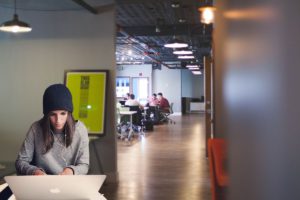How The Hospitality Industry Uses Design
3 min read
Hospitality requires a rare kind of skill. To some, it may be perceived as a purely service-based industry. However, there is more to providing an excellent customer experience than merely just the service. The servicescape, including elements of interior architecture and set up, also plays a significant role in the hospitality industry.
Hospitality is an industry composed of a team that aims to establish a relationship with their guests. This involves welcoming them in good faith through service, entertainment and outstanding reception.
This kind of industry usually can be observed in hotels and accommodation, airline flights, cruise ships, cafes, restaurants, theme parks and family resorts. Considering that consumers expect world-class service from many of these facilities, how can the hospitality industry embrace interior architecture to improve the customer experience?
Understand that the hospitality industry is complimented by interior architecture
When you are out for a buffet night with your family, a designated server is standing by at the curry section. There will also be someone at the roasted lamb section too, ready to give you a slice. By the dessert section, there’s always somebody who’s prepared to serve you a freshly cooked crepe. If there was only one person employed to take care of all these tasks, then satisfactory service would not be provided. In conjunction with this service, the design of the buffet should be easy to navigate and feel spacious enough for customers to move around the buffet area. Interior architecture and hospitality design adds to what the hospitality industry does best, providing a smooth and acceptable experience for consumers.

Provide a sense of positivity and atmosphere through interior architecture
Positive vibes, a pleasant atmosphere and a relaxed environment, contribute to the core of the hospitality industry’s products and services. It breathes life to the business and adds value for customers. One residential resort that puts this concept into action is Angsana Laguna. Its brand is represented adequately from when you enter the resort, to how the lobby was designed with breathable space. Space is highlighted with a huge vase centrepiece. Customers are welcomed to the resort with impressive interiors and greeted with traditional drinks. The staff’s uniforms complement the colours, theme and style of the resort.
The resort, the staff, the facilities, architecture of the pool, the front beach and the lagoon are all elements considered when designing the interior. Whether you are in Phuket, Vietnam, Cambodia, Indonesia, India, Malaysia, Greece or Maldives, any good resort will incorporate elements of interior architecture to attract customers. This, combined with excellent service, will lead to a happy consumer.
Believe in its potential to entice consumers
To engage potential new customers and inform people about the one-of-a-kind experience your business offers, construct a solid website and provide images of the interior design, as well as great content explaining the different services offered. Construct the content in a way that reflects the values and standards of the business. This caters to potential customers on a global scale, since it will be available on the internet for everyone to see.
Interior architecture should support the business by having similar aspects between the services offered and the interior theme or style. For example, a company that offers rejuvenation and relaxation services, such as a yoga retreat spa, must incorporate elements in their decor to provide a sense of elegance, getaway, and secluded experience.
There is no denying that a business’s pillars in hospitality are its people and location. This is, however, strongly accompanied by interior design and architecture to maximise a company’s appeal and value.






